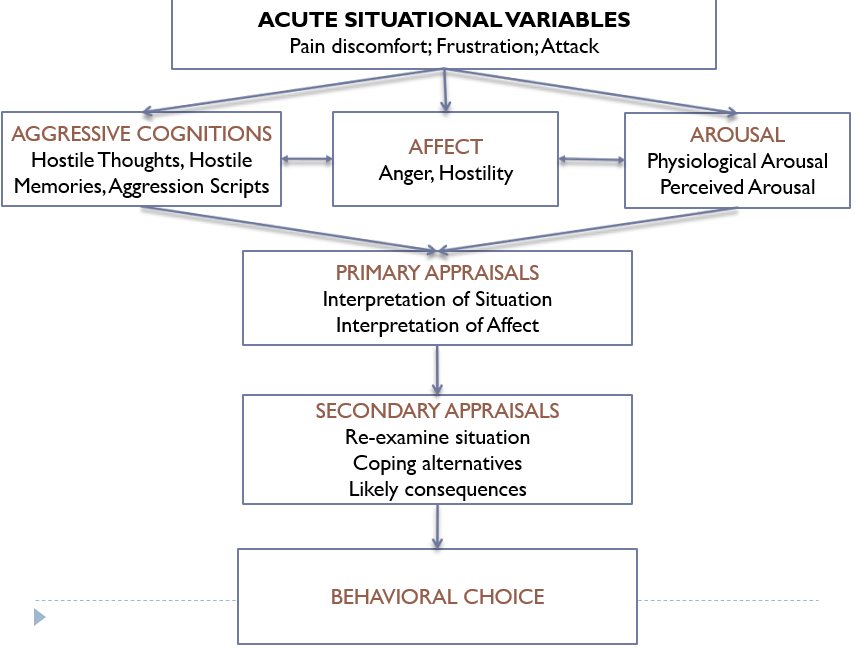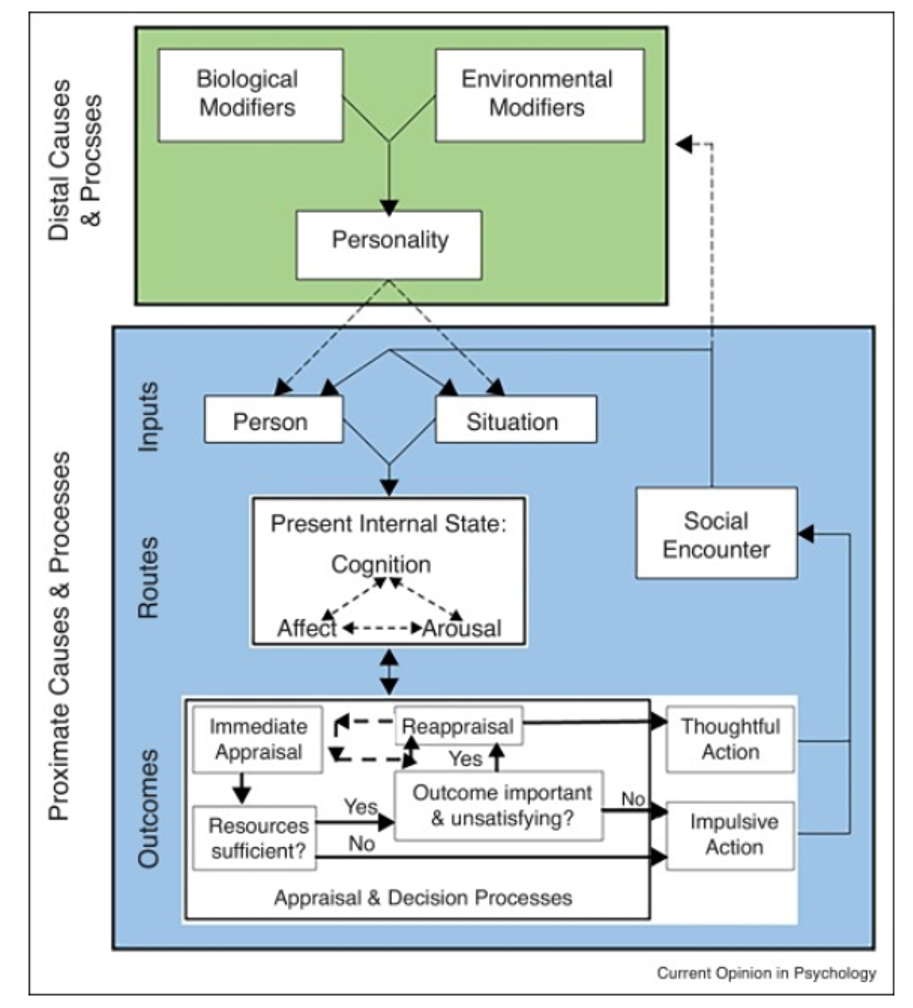Chapter 9: Anger
Anderson and Colleagues’ General Aggression Model (GAM)
Figure 10
The emotion portion of the GAM Model (Anderson et al., 1995)

Reproduced from “Hot temperatures, hostile affect, hostile cognition, and arousal: Tests of a general model of affective aggression,” by C.A. Anderson, W.E., Deuser, and K.M. DeNeve, 1995, Personality and Social Psychology Bulletin, 21(5), p. 436. (Hot Temperatures, Hostile Affect, Hostile Cognition, and Arousal: Tests of a General Model of Affective Aggression) Copyright 1995 by the Society for Personality and Social Psychology, Inc.
Long Description
The image is a flowchart depicting the emotion portion of the General Aggression Model (GAM) by Anderson et al., 1995. At the top center is a box labeled “Acute Situational Variables” with the descriptors “Pain discomfort; Frustration; Attack.” Three arrows point from this box to three separate boxes labeled “Aggressive Cognitions,” “Affect,” and “Arousal.” “Aggressive Cognitions” is described with “Hostile Thoughts, Hostile Memories, Aggression Scripts.” “Affect” is described with “Anger, Hostility,” and “Arousal” is described with “Physiological Arousal, Perceived Arousal.” Arrows from “Aggressive Cognitions” and “Arousal” lead towards “Affect,” indicating a connection. From “Affect,” an arrow leads to a box labeled “Primary Appraisals” with descriptors “Interpretation of Situation, Interpretation of Affect.” Below this, “Primary Appraisals” lead to “Secondary Appraisals,” which state “Re-examine situation, Coping alternatives, Likely consequences.” This leads to the final box labeled “Behavioral Choice.”
If you are interested in reviewing the entire model, read this article by Allen, Anderson, and Bushman (2018).
Figure 11
The Complete GAM Model (Allen et al., 2018)

Reproduced from “The General Aggression Model,” by J.J. Allen, C.A. Anderson, and B.J. Bushman, 2018, Current Opinion in Psychology, 19, p. 76 (The General Aggression Model) Copyright 2017 by Elsevier, Ltd.
Long Description
The image is a flowchart depicting a psychological model with two main sections, separated by a color scheme. The upper section is green, labeled “Distal Causes & Processes,” illustrating factors that influence personality. This section includes “Biological Modifiers” and “Environmental Modifiers” pointing towards “Personality.” Below, the blue section is titled “Proximate Causes & Processes,” detailing how personality influences behavior. It consists of inputs “Person” and “Situation,” leading to the “Present Internal State: Cognition,” which diverges into “Affect” and “Arousal.” Arrows guide the flow through “Appraisal & Decision Processes,” querying “Resources sufficient?” If yes, it can proceed to “Reappraisal” or “Immediate Appraisal.” Depending on the importance of the outcome, the flow continues to “Thoughtful Action” or “Impulsive Action.” A dotted line shows external feedback from a “Social Encounter.” The entire diagram is bordered with labels and arrows detailing the relationships and processes.

